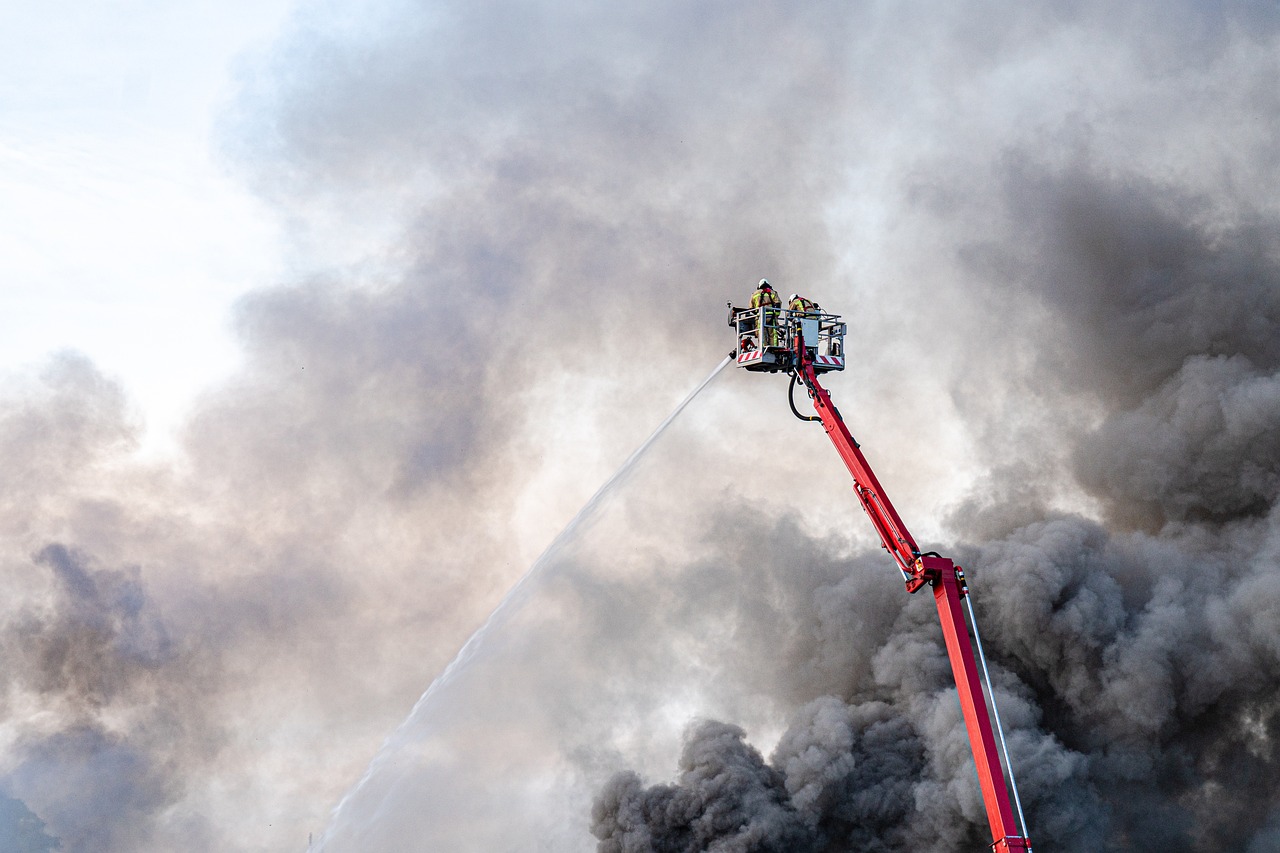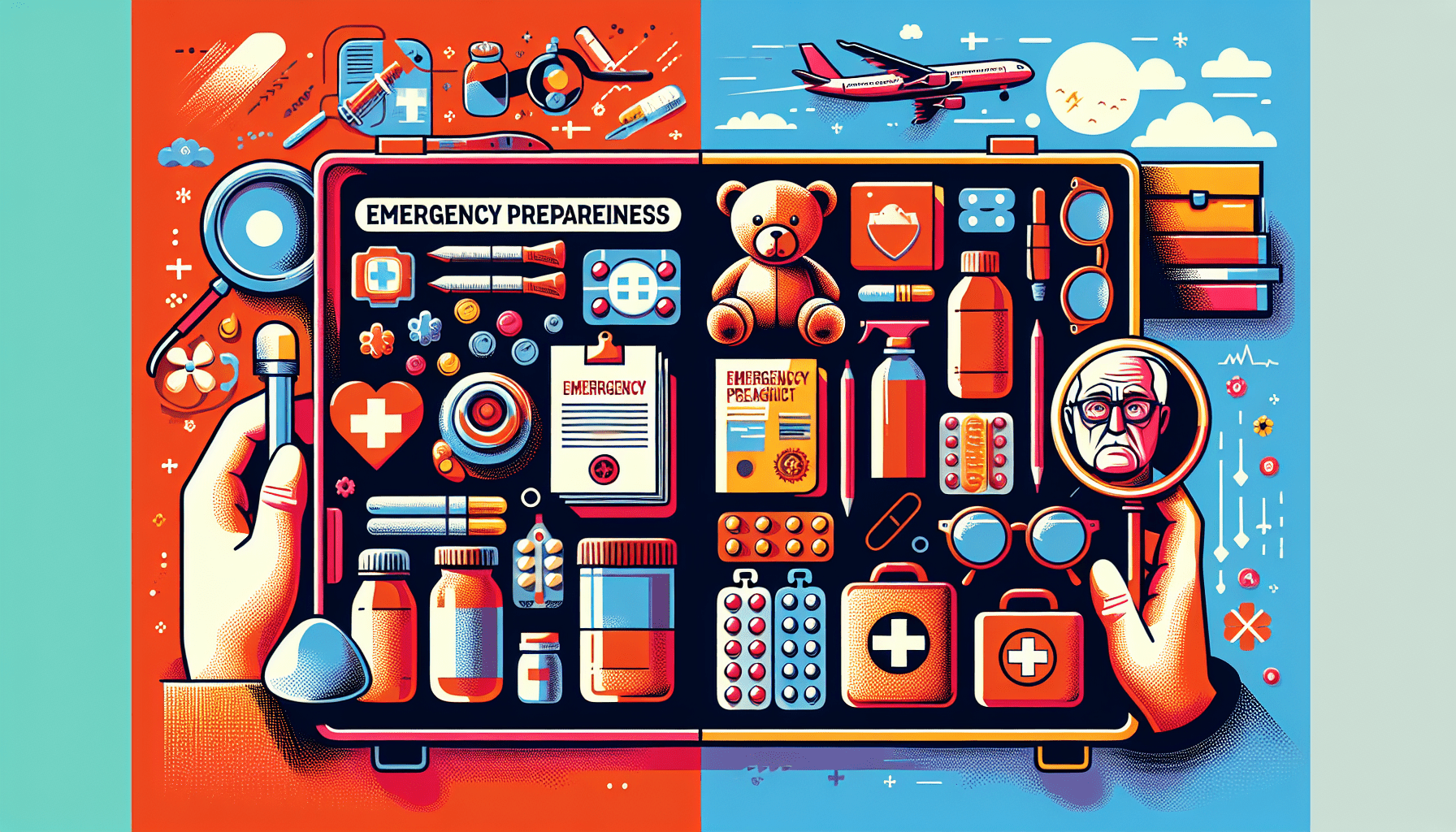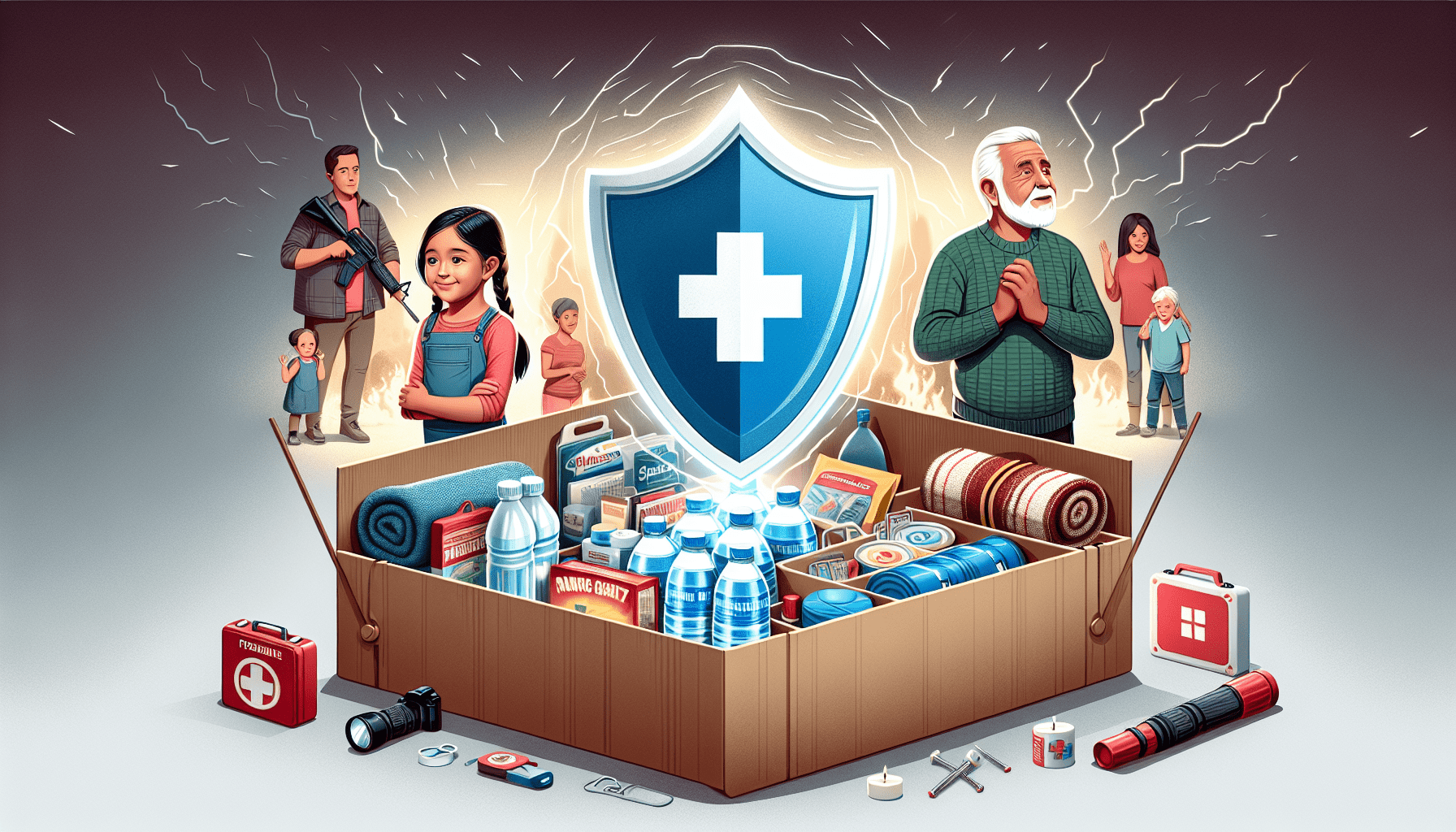In this article, you will discover the essential steps to effectively prepare children and seniors with an emergency preparedness kit. As we navigate through unpredictable times, it is crucial to empower and equip our loved ones with the necessary tools to stay safe during unforeseen emergencies. From creating customized kits to ensuring everyone understands their role, this guide will provide you with valuable insights and practical tips for safeguarding the well-being of children and seniors in times of crisis.

Important Documents
Passports and identification
It is important to have your passports and identification documents readily accessible in case of an emergency. These documents are crucial for identification purposes and may be required for travel or other necessary activities in the event of a disaster. Make sure to store them in a waterproof and fireproof container to protect them from any potential damage.
Medical records and prescriptions
In times of emergency, having medical records and prescriptions on hand can be extremely helpful. These documents will provide crucial information about any underlying medical conditions, allergies, or medications that you may need. Make sure to have copies of your medical records and prescriptions in a safe and accessible location, such as a waterproof folder or a digital storage system.
Emergency contact list
Creating an emergency contact list is essential for preparedness. Include the names, phone numbers, and addresses of your closest family members, friends, and neighbors. Additionally, include the contact information for your healthcare providers, insurance company, and any other relevant organizations. Make sure to update this list regularly and keep multiple copies in different locations, such as your emergency kit, car, and wallet.
Emergency Essentials
First aid kit
Every emergency preparedness kit should include a well-stocked first aid kit. This kit should contain basic supplies such as bandages, gauze, adhesive tape, antiseptic wipes, and gloves. Additionally, consider including any necessary medications or medical supplies specific to your needs, such as inhalers or epinephrine auto-injectors.
Flashlights and extra batteries
During an emergency, power outages are common. Having flashlights with extra batteries will ensure that you have a reliable light source when needed. It is important to check and replace the batteries regularly to ensure they are in working order when you need them most.
Emergency whistle
An emergency whistle can be a life-saving tool to attract attention and signal for help. Keep a whistle in your emergency kit or with you at all times. In emergencies or dangerous situations, a whistle’s loud and distinctive sound can help rescuers locate you more easily, especially in areas with limited visibility.

Food and Water
Bottled water
Water is essential for survival, especially in emergency situations. Make sure to have an adequate supply of bottled water for each family member. The general recommendation is to have at least one gallon of water per person per day for a minimum of three days. Remember to replace your water supply every six months to ensure freshness.
Canned food and non-perishable snacks
Include a variety of canned food and non-perishable snacks in your emergency kit. These items should be easy to open and require little to no preparation. Consider foods that are high in nutrients, such as canned fruits and vegetables, protein bars, and peanut butter. Be sure to check expiration dates regularly and replace any expired items.
Manual can opener
In the event of a power outage, having a manual can opener can make a significant difference. Many canned foods require a can opener to access the contents. Include a sturdy manual can opener in your emergency kit to ensure that you can open and consume the canned foods you have stored.
Clothing and Bedding
Extra clothes and comfortable shoes
Having extra clothes and comfortable shoes in your emergency preparedness kit is essential. Choose clothes that are suitable for the climate and weather conditions in your area. Include items such as socks, underwear, long-sleeved shirts, pants, and sturdy shoes. These extra clothes will provide comfort and protection during rough conditions.
Blankets and sleeping bags
Warmth is crucial during emergencies, particularly if you find yourself without power or adequate heating. Include blankets or sleeping bags in your emergency kit to provide insulation and comfort. Opt for lightweight and compact options that won’t take up too much space in your kit.
Rain ponchos
Protect yourself from the rain with rain ponchos or waterproof jackets. These items will keep you dry and help prevent hypothermia during wet and cold weather. Choose lightweight and compact rain gear that can easily be stored in your emergency kit or carried with you when necessary.

Communication Tools
Battery-powered radio
A battery-powered radio is an invaluable tool during emergencies. It allows you to stay informed about the situation, receive important updates, and gather information about rescue efforts. Make sure to include spare batteries for the radio and regularly check and replace them to ensure it remains functional.
Cell phone with chargers
A cell phone is a crucial communication tool during emergencies. Keep your cell phone fully charged and include a portable phone charger or power bank in your emergency kit. In the event of a power outage, a portable charger will allow you to charge your phone and stay connected with loved ones and emergency services.
Whistle or walkie-talkies
In addition to the emergency whistle mentioned earlier, consider including walkie-talkies in your emergency kit. Walkie-talkies provide a reliable means of communication when cell phone networks might be unavailable or congested. If you’re separated from your loved ones during an emergency, walkie-talkies can help you stay connected and coordinate your actions.
Personal Hygiene Items
Toothbrush and toothpaste
Maintaining good oral hygiene is important, even during emergencies. Include toothbrushes and travel-sized toothpaste in your emergency kit to ensure you can care for your teeth and gums properly. Remember to replace these items periodically to maintain their freshness and effectiveness.
Soap and hand sanitizer
Keeping your hands clean is essential for preventing the spread of germs and diseases. Include a bar of soap or travel-sized hand sanitizer in your emergency kit. These items will allow you to maintain proper hand hygiene, even in situations where water may be limited.
Feminine hygiene products
For individuals who menstruate, having an adequate supply of feminine hygiene products is crucial. Include a sufficient quantity of pads, tampons, or menstrual cups in your emergency kit to last the expected duration of an emergency situation. Regularly check and replace these items to ensure they remain effective and suitable for use.

Entertainment and Comfort
Books or playing cards
In times of emergency, it is important to have sources of entertainment and distraction. Include books, magazines, or playing cards in your emergency kit to help pass the time and provide a sense of normalcy. Choose lightweight and compact options to save space in your kit.
Stuffed animal or comfort item
For children and individuals who find comfort in certain items, consider including a stuffed animal or comfort item in your emergency kit. These familiar objects can help provide comfort and security during stressful situations.
Puzzle or activity books
Puzzles and activity books can help keep both children and adults engaged during emergencies. Include crossword puzzles, Sudoku, coloring books, or other activities that cater to different age groups and interests. These items can provide mental stimulation and distract from the stress of the situation.
Special Considerations for Children
Comforting toy or blanket
Children often find comfort in familiar objects, such as a favorite toy or blanket. Include their preferred comforting items in their own emergency kit to help alleviate anxiety and provide a sense of security during challenging times.
Favorite snacks or drinks
Include your child’s favorite snacks or drinks in their emergency kit. Familiar flavors and foods can help bring a sense of normalcy and comfort in stressful situations. Opt for non-perishable snacks and drinks that have a long shelf life.
Coloring books and crayons
For younger children, including coloring books and crayons in their emergency kit can provide a creative outlet and keep them engaged. Coloring is a calming activity that can help reduce stress and anxiety. Make sure to include age-appropriate coloring books and non-toxic crayons.

Special Considerations for Seniors
Extra medications and eyeglasses
For seniors, it is crucial to have an ample supply of medications and eyeglasses in their emergency kit. Ensure that you have at least a week’s worth of medication and the necessary medical equipment to manage any existing medical conditions. Regularly check expiration dates and replace any expired medications.
Extra hearing aid batteries
If you or a senior loved one relies on hearing aids, include extra hearing aid batteries in the emergency kit. Power outages can be especially challenging for individuals with hearing impairments, and having a reliable power source for their hearing aids is vital.
Medical equipment and supplies
If you or a senior loved one requires specialized medical equipment, make sure to include it in the emergency preparedness kit. This may include items such as blood glucose monitors, oxygen tanks, or mobility aids. Check the equipment regularly to ensure it is in good working condition.
Additional Safety Items
Emergency cash and coins
Having emergency cash and coins can prove invaluable during a disaster. ATMs and card readers may be inaccessible during power outages or other emergency situations. Keep a small amount of cash and coins in your emergency kit to ensure you can purchase necessary supplies or services in such scenarios.
Fire extinguisher
Including a small fire extinguisher in your emergency kit can help you quickly respond to small fires and prevent them from escalating. Make sure to familiarize yourself with its usage and regularly check the expiration date. Ensure everyone in your household knows the location of the fire extinguisher and how to use it safely.
Duct tape and plastic sheeting
Duct tape and plastic sheeting can be useful for sealing off windows, doors, or vents during emergencies. They can help protect against hazardous particles, such as smoke or chemical contaminants, and maintain a more secure environment within your home. Include these items in your emergency kit to be prepared for potential utility disruptions or hazardous situations.
In conclusion, being prepared for emergencies is essential for everyone, regardless of age or personal circumstances. By following the guidelines outlined in this article and customizing your emergency kit according to your specific needs, you can ensure that you and your loved ones have the necessary supplies and resources to navigate through challenging situations. Remember to regularly check and replenish your emergency kit to ensure everything is in working order and up to date. Stay safe, stay prepared, and be ready to face whatever emergencies come your way.
